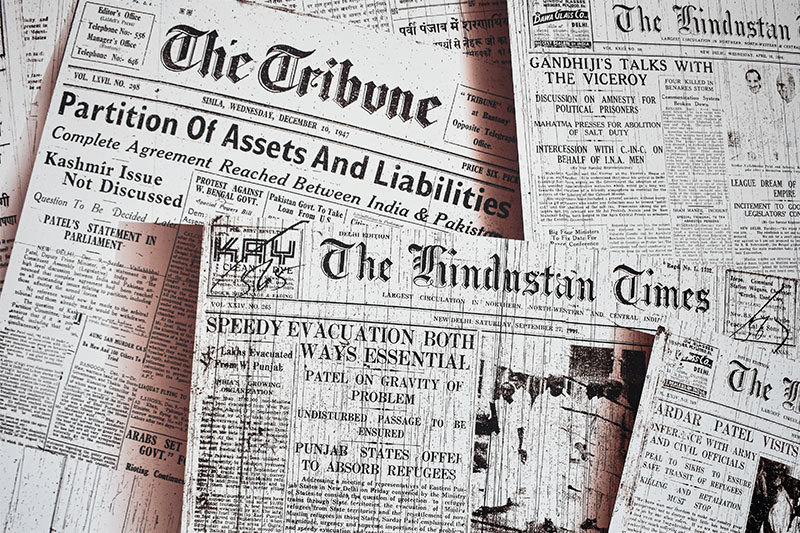Amidst the COVID-19 pandemic, fake news is perpetuating a misinformed, contradictory myriad of ‘facts’ in an already difficult situation.
What is fake news?
“Fake news” is a term for false information, from news to stories and hoaxes created to deliberately misinform or deceive readers – and it’s not a new phenomenon. From your morning breakfast show segment and selection of broadsheets to the evening news and even e-mail, the 24-hour cycle of information rapidly circulating media platforms is notoriously difficult to manage, making the challenge of verifying fact from fiction even harder. On top of that, it’s been reported that, as of 2019, more Americans are reportedly getting their news from social media than from more traditional and reliable sources, making it increasingly challenging to tell whether stories are credible or not.
So, how can you identify fake news?
#1 Identify reliable news sources
To help decide whether a source is reliable or not, you should ask these questions:
• Is it clear who created this news?
• Is the author reputable and qualified to write on this subject?
• Is what’s being said fact or opinion?
• Are they citing reliable sources?
• Does it make sense to you while reading it?
Checking the credibility of what you’re reading is the first step in the right direction. You should be able to easily tell what news outlet this article came from, who wrote it, and how credible the sources are (i.e. does the author include links to studies from reputable colleges and universities, legitimate newspapers and journals, or quote qualified professionals?). Be wary of stories featuring unknown or uncited sources, and always check their website for more information. Finally, pay attention to the quality and timeliness of what you are reading. Credible journalists and organisations are less likely to make repeated spelling and grammar mistakes, so double-check whether the article has proper spelling, grammar, and punctuation when assessing its credibility.

#2 Read beyond the headlines
Headlines, tweets, and social media captions often use provocative language, exaggeration and dramatic punctuation to grab attention. The use of such use of sensationalist language usually signals ‘clickbait,’ a tactic used by the media to grab attention, appeal to your emotions and curiosity, and drive clicks – normally at the expense of truth or accuracy. It’s important, therefore, to be suspicious of shocking or inflammatory headlines like “Man Tries to Hug A Wild Lion – You Won’t Believe What Happens Next!” or “Woman Falls Down and Cries for Help Twice. The Second Time, My Jaw Drops.”
Some red flags include:
• Strange domain names, e.g. whydon’tyoutrythis.com
• Unusual domain extensions or subdomains, e.g. abcnews.com.co or tv.infowars.com
• Unbelievable or inflammatory headlines
• Headlines that end on a cliffhanger, e.g. “You won’t believe…,” “…shocking result,” “…too good to be true,” etc.
• Headlines that are formatted in ALL CAPS
• Shocking or altered images – e.g. “Is this singer pregnant?”
• Dehumanising language when describing people or ideas
• Deliberately shocking statements that aren’t supported by facts, e.g. “This miracle pill will stop cancer;” or “politician covers up shocking news of infidelity.”
Furthermore, it’s important to acknowledge why someone might want to spread misinformation. Reasons can range from the personal (e.g. wanting to demean groups of people simply because they don’t like them); the professional (e.g. disparaging a person’s work to benefit themselves); the political (e.g. stories that are created to deliberately mislead audiences, promote a biased point of view or political agenda); and for financial gain – as generating more clicks means more advertisement funding and (unfortunately) the easiest way to get more clicks is through often misleading, but incredibly intriguing titles. And then there are the people who are simply unaware that they are, in fact, sharing misleading information, forwarding the content on without deeper analysis.

#3 Understand that people also have their own biases and agendas
When it comes to media bias, some biases can lead to misunderstandings, social injustices and open hostility. Remember that there’s no such thing as a neutral journalist and that, as a result, media outlets can come from one particular point of view, often disguising disparaging opinions as “facts” or omitting information that would have led to a more balanced account entirely. You should, therefore, learn to challenge what you hear and read, no matter the source. Embrace how different people from a variety of different backgrounds and perspectives could view a story differently. Expose yourself to a range of different news sources and remind yourself of the importance of avoiding online echo chambers and filter bubbles.
Here are our top tips for detecting and avoiding media bias:
• Question the author’s intention behind writing the piece.
• Look at the viewpoints being represented – are they balanced?
• Look at how different media cover the same story.
• Does the author stereotype?
• Is the language loaded?
• Is there a lack of context?
• Does the headline and story match?
The news holds power and influence over our decisions – who we vote for, how we manage our lives and how we view the world. Understanding why misinformation occurs is a challenge, but it’s also a crucial skill. As we progress in a world overly proliferated with information – both accurate and inaccurate, filtering through the information that’s out there through these lenses will help to put an end to the very real consequences of fake news.
Related Articles
A Beginner’s Guide to a Furlough – and What to Do Next
Social Distancing: The Ultimate Guide to Definitions, Rules & Etiquette
Coronavirus: 51% of CEOs Report Virus is a “Severe Risk” to their Business





